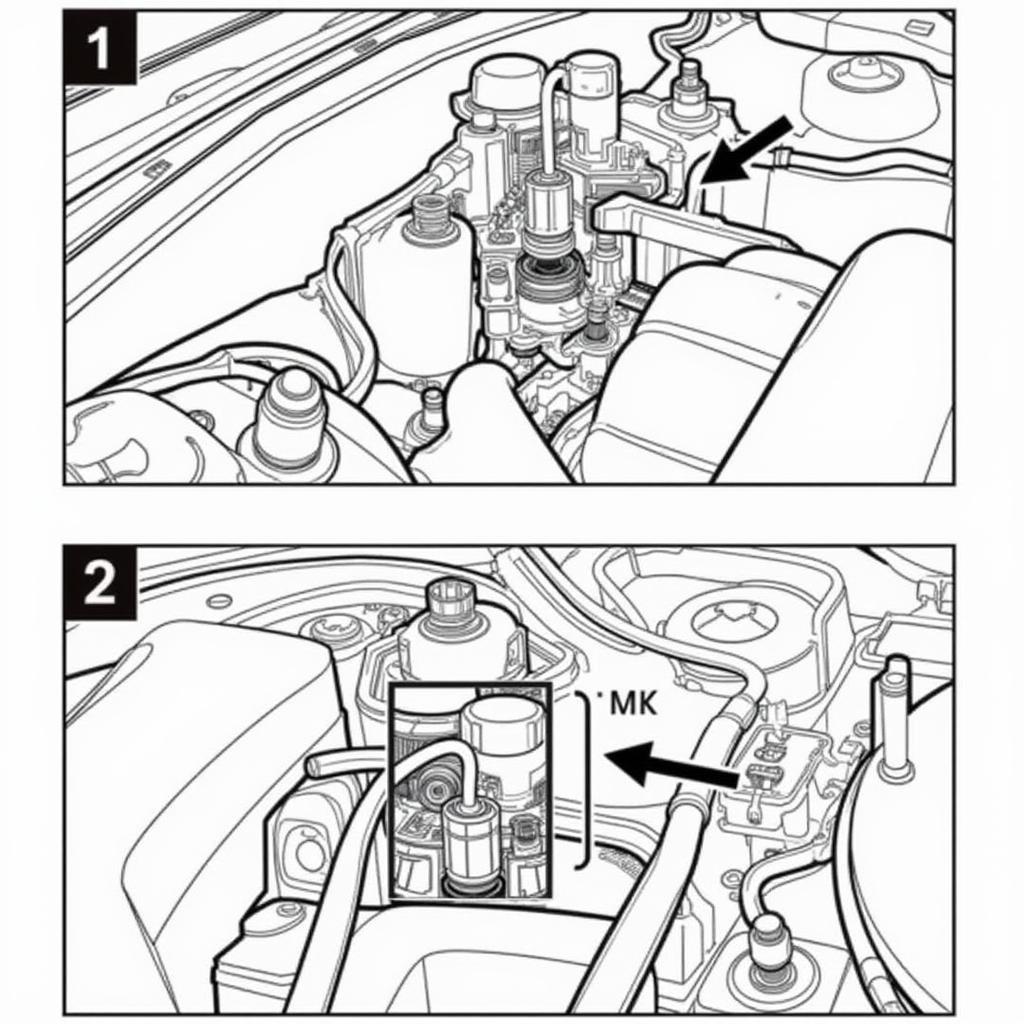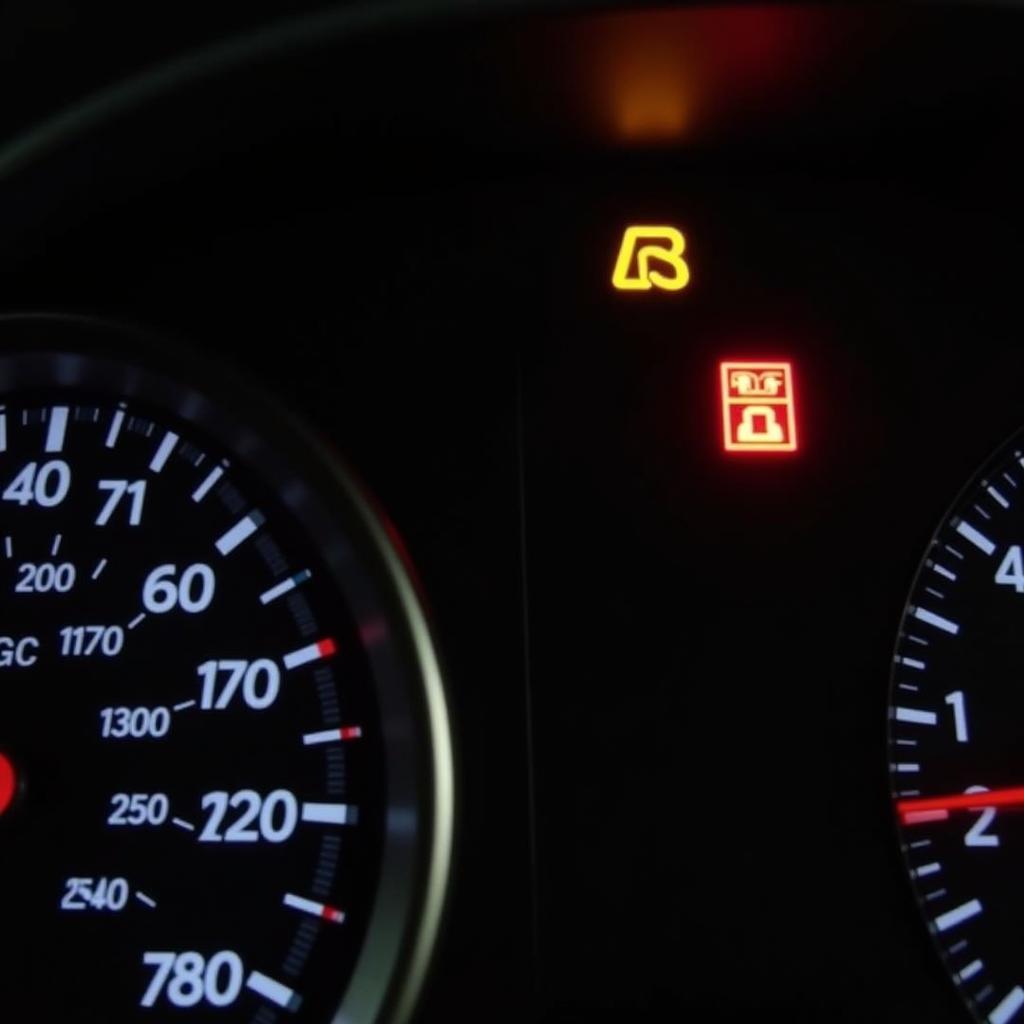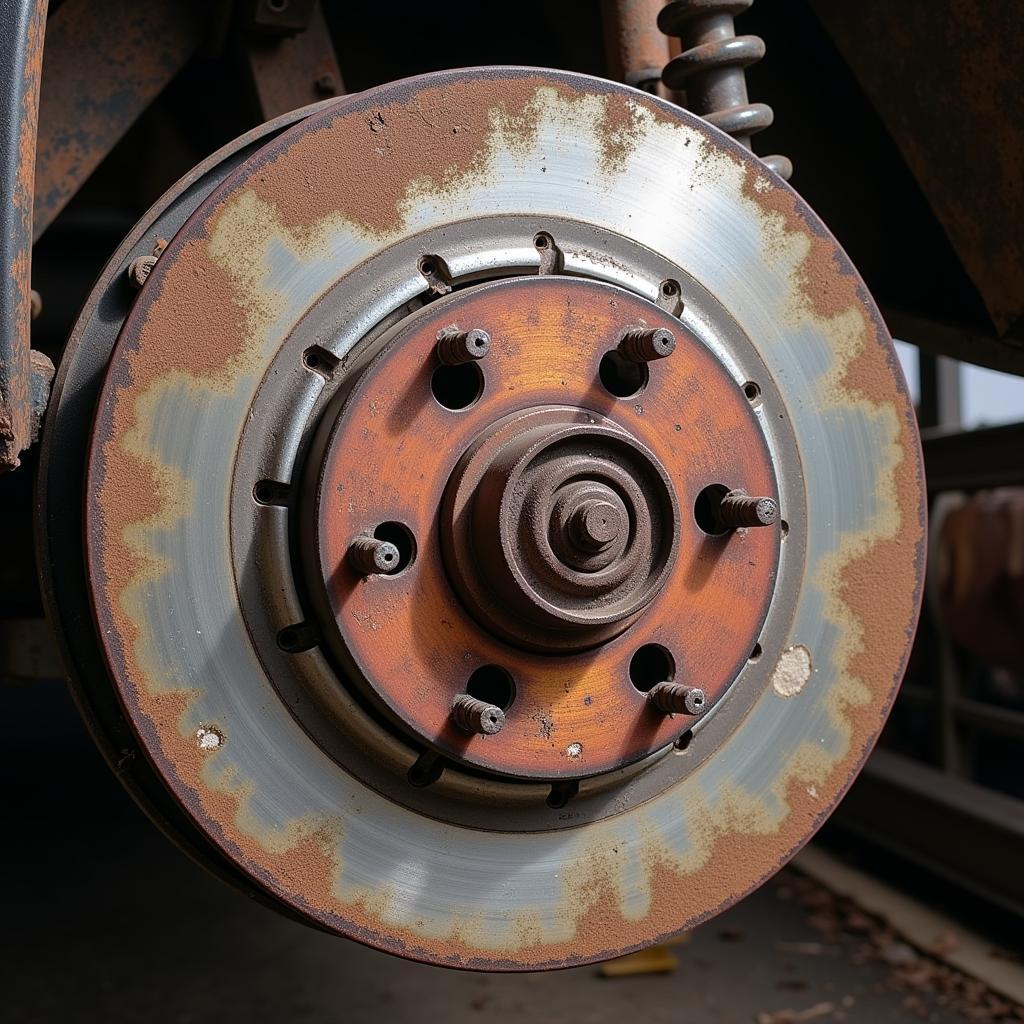Experiencing a light warning on your Lexus IS300 dashboard, particularly when you apply the brakes, can be concerning. This issue often points to a problem within the braking system, which needs immediate attention for your safety and the vehicle’s performance. While a professional diagnosis is always recommended, this guide provides a comprehensive overview of common causes and troubleshooting steps to help you understand the situation better.
Common Causes of Brake Light Warning in a Lexus IS300
Several factors can trigger the brake light warning in your Lexus IS300. Let’s explore some of the most frequent culprits:
1. Worn Brake Pads
Brake pads are your first line of defense when braking. Designed to wear down over time, thin brake pads can trigger the warning light.
How to identify:
- A high-pitched squealing or screeching sound, especially when braking at low speeds, is a strong indicator of worn brake pads.
- You can also visually inspect your brake pads through the spaces between the wheel spokes. If the pad material appears less than ¼ inch thick, it’s time for a replacement.
 Worn Brake Pads on a Lexus IS300
Worn Brake Pads on a Lexus IS300
2. Low Brake Fluid Level
Hydraulic fluid is the lifeblood of your car’s braking system. When the fluid level drops below a safe level, usually due to leaks or worn brake components, it can trigger the brake light warning.
How to identify:
- Check the brake fluid reservoir located under the hood. Most vehicles have translucent reservoirs with minimum and maximum level markings.
- If the fluid level is below the minimum mark, it needs immediate attention.
 Checking Brake Fluid Level on a Lexus IS300
Checking Brake Fluid Level on a Lexus IS300
3. Faulty Brake Light Switch
The brake light switch, located under the brake pedal, plays a crucial role in activating your brake lights when you press the pedal. If this switch malfunctions, it can disrupt the signal and illuminate the brake light warning.
How to identify:
- If your brake lights don’t illuminate when the brake pedal is pressed, but other lights function correctly, it may indicate a faulty brake light switch.
- A mechanic can diagnose this issue using a multimeter to test the switch’s continuity.
4. ABS System Issues
Modern vehicles like the Lexus IS300 are equipped with Anti-lock Braking Systems (ABS) for improved braking control. If a problem arises within the ABS system, such as a malfunctioning wheel speed sensor or a faulty ABS module, it can trigger the brake light warning on your dashboard.
How to identify:
- In addition to the brake light, the ABS warning light might also illuminate on the dashboard.
- You might experience unusual noises or vibrations from the brake pedal during braking if the ABS system is malfunctioning.
“Remember, neglecting your braking system is highly risky. A well-maintained braking system is crucial for your safety on the road.” – David Miller, Senior Automotive Engineer at AutoCare Experts.
Troubleshooting the Brake Light Warning: A Step-by-Step Guide
While it’s crucial to consult a qualified mechanic for a thorough diagnosis and repair, you can take some initial steps to troubleshoot the issue:
- Check the brake fluid level: As mentioned earlier, low brake fluid is a common culprit. If the level is low, add the recommended brake fluid type for your Lexus IS300. Refer to your owner’s manual for guidance.
- Inspect the brake pads: Visually inspect your brake pads for wear. If they appear thin, schedule an appointment for replacement.
- Examine the brake lights: Ask a friend to observe the brake lights while you press the brake pedal. If they don’t light up or illuminate intermittently, the brake light switch might be faulty and needs replacement.
- Listen for unusual noises: Pay attention to any unusual sounds like grinding, screeching, or clicking while braking, as these can indicate various brake system problems.
- Avoid driving if unsure: If you’re uncertain about the cause of the brake light warning or suspect a serious issue, avoid driving your Lexus IS300 and have it towed to a trusted mechanic for inspection and repair.
 Mechanic Inspecting Brakes on a Lexus IS300
Mechanic Inspecting Brakes on a Lexus IS300
FAQs about Brake Light Warning in a Lexus IS300
1. Can I continue driving my Lexus IS300 with the brake light on?
It’s strongly advised against driving with a brake light warning on. This warning indicates a potential issue with your braking system, jeopardizing your safety and the vehicle’s performance. Have your vehicle inspected by a qualified mechanic as soon as possible.
2. How much does it cost to fix a brake light warning in a Lexus IS300?
The cost to fix a brake light warning can vary widely depending on the underlying cause. A simple brake pad replacement might cost a few hundred dollars, while a more complex ABS system repair could cost significantly more. Consult a trusted mechanic for an accurate estimate based on your specific situation.
3. How often should I change my brake fluid?
It’s generally recommended to replace your brake fluid every two years or as specified in your Lexus IS300 owner’s manual.
4. Why are my brake lights always on?
If your brake lights remain constantly on, it usually points to a faulty brake light switch that needs replacement.
5. Can I add any brake fluid to my Lexus IS300?
No, you should only use the brake fluid type recommended in your owner’s manual. Using the wrong fluid type can damage your braking system and lead to costly repairs.
Conclusion
Addressing the brake light warning on your Lexus IS300 promptly is paramount for safe and reliable driving. While this guide provides helpful information, it’s not a substitute for professional diagnosis and repair. Schedule an appointment with a qualified mechanic to ensure your braking system is in optimal condition. Remember, a well-maintained braking system is an investment in your safety and the longevity of your Lexus IS300.


